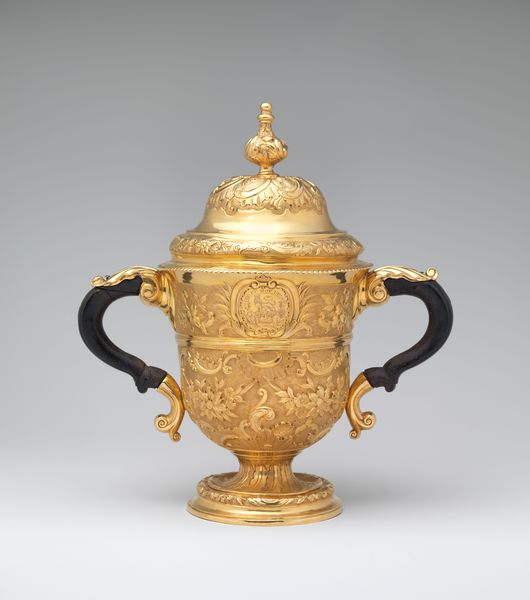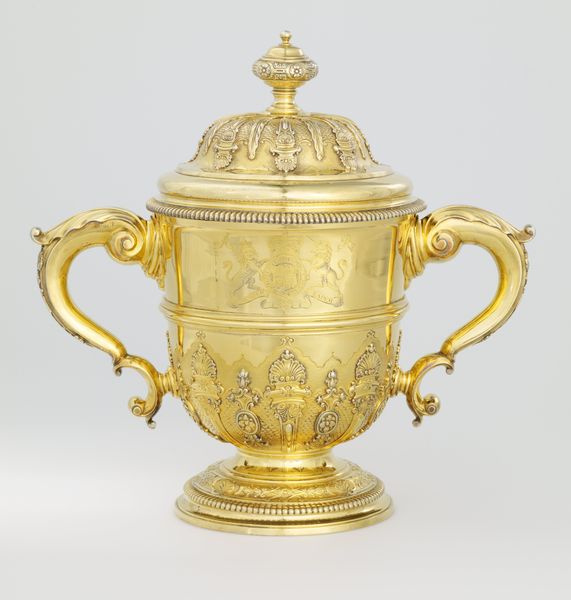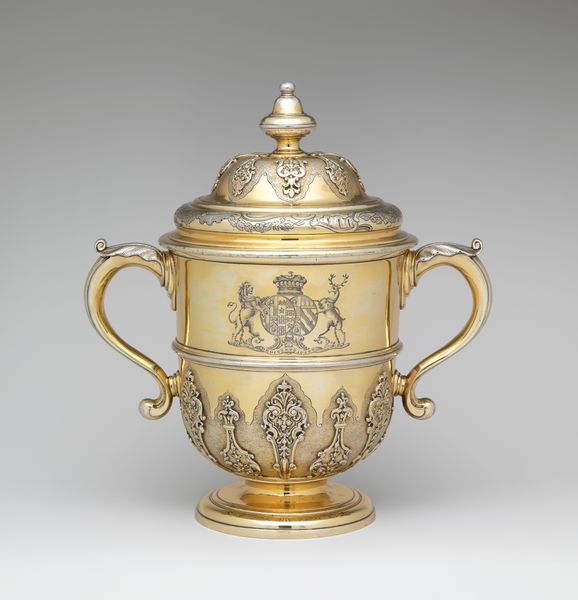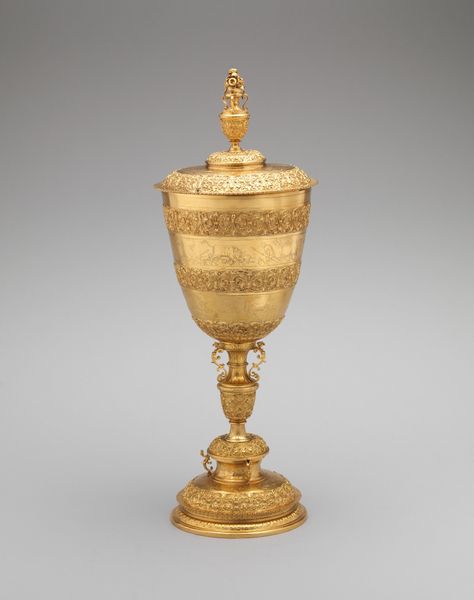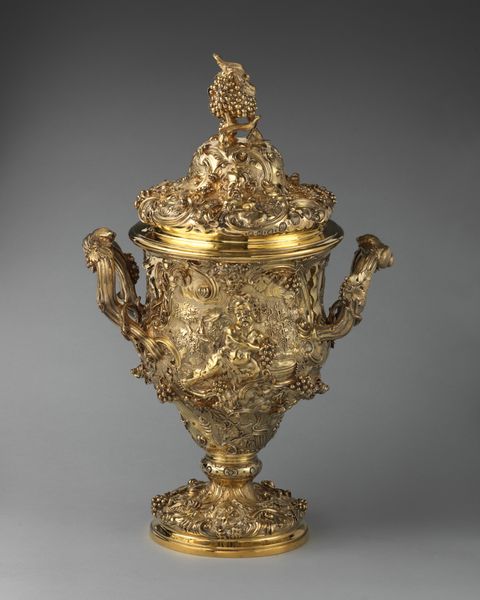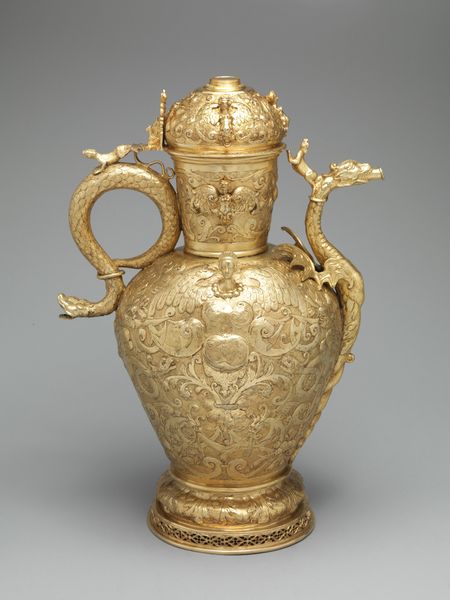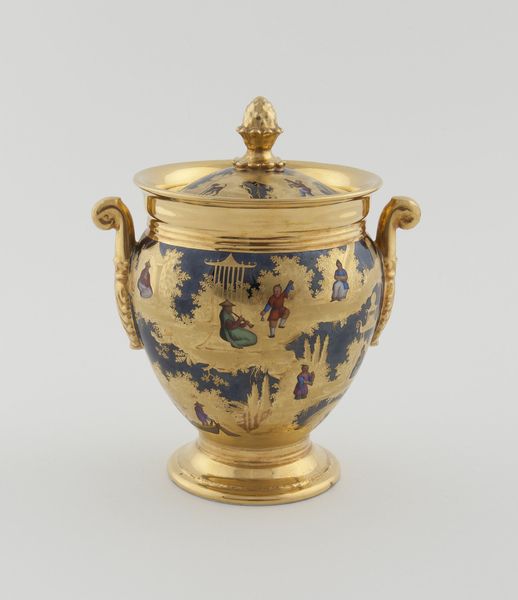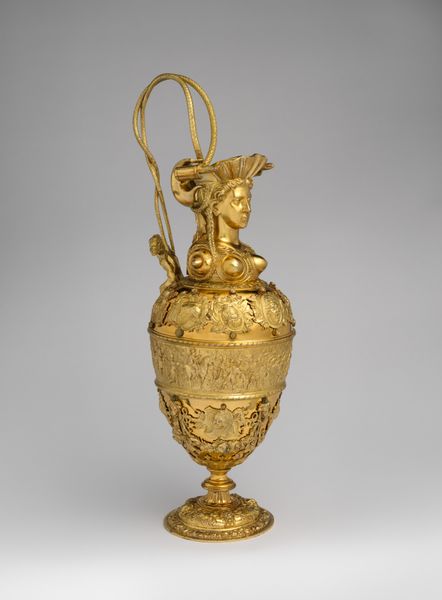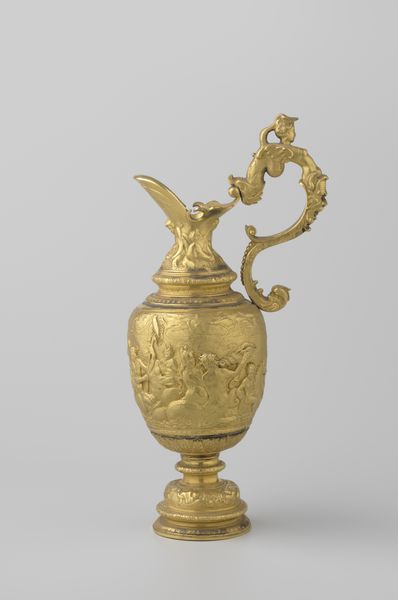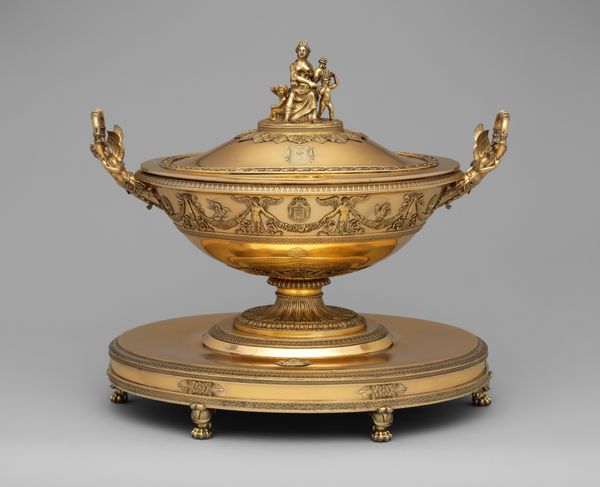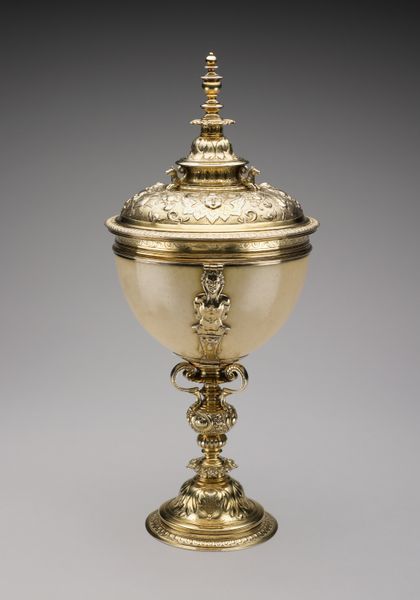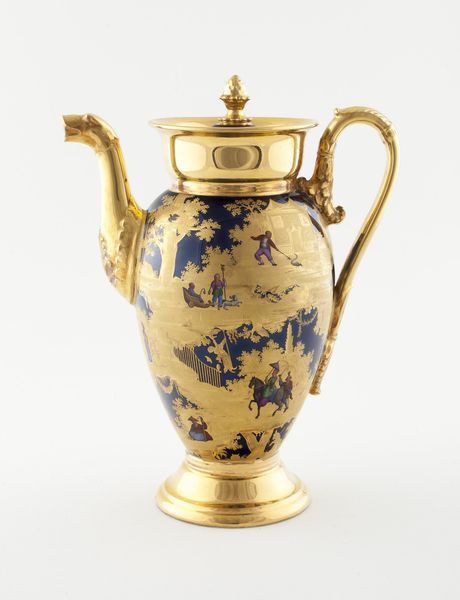
metal, gold, sculpture
#
metal
#
gold
#
sculpture
#
decorative-art
Dimensions: Overall: 9 1/8 × 6 1/2 × 4 3/8 in. (23.2 × 16.5 × 11.1 cm)
Copyright: Public Domain
Editor: Take a peek at this opulent Coffeepot made of gold by Johann Ludwig Biller in the 19th century. The sheer extravagance of it makes me wonder about the person who owned it. What stories could this vessel tell us about society and status in that era? Curator: Indeed. It’s easy to be mesmerized by its luxurious aesthetic, but what's more interesting is the socio-economic context. Objects like these weren’t just decorative, they were potent symbols of wealth, power, and even political affiliation. Consider the role of the goldsmith: their status and the commissioning of such works. Does the scale or the intricacy of the ornamentation suggest anything about its intended audience or the political climate in which it was produced? Editor: It's amazing how such a seemingly simple object can reflect complex social structures! It's more than just a coffeepot; it is a statement of superiority. Did certain coffee houses, or families commission them in the 19th Century to indicate high social status? Curator: Absolutely. Coffee consumption itself became a ritual intertwined with social gatherings, diplomatic meetings, and trade. Having an elaborately crafted coffeepot signaled belonging to a specific echelon of society that could afford exotic goods. Reflect on this: how did access to goods like coffee and elaborate objects become tools for social distinction? The ownership and display of items such as this solidified class and possibly even religious status at that time. Editor: I never considered the politics of coffee! I see it now as a tool for the wealthy class. Now when I view pieces, I wonder who was being intentionally excluded. Curator: Precisely. Viewing art through a historical lens challenges us to see beyond surface beauty. Consider the societal currents shaping its creation, display, and its reception.
Comments
No comments
Be the first to comment and join the conversation on the ultimate creative platform.
